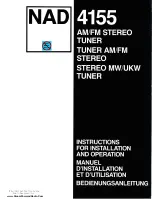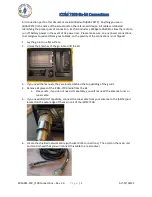
26
III. RECEIVER INSTALLATION
The receiver is intended for indoor applications, for installation inside installation boxes
Φ
60 or larger,
inside the housings of other automation devices, ensuring appropriate operating conditions in accordance
with the technical parameters of the receiver. Do not mount the receiver in places exposed to high
humidity and frequent and sudden temperature changes. Due to the screw connection accessible from the
outside, galvanic isolation from other devices and wires should be provided, especially when mounted
inside the housing of another device.Attention should also be paid to thermal insulation from elements of
automation devices that can reach high temperatures (motors, transformers, actuators of control devices,
all heat sinks, etc.). The electrical connection should be carried out in accordance with Fig. 1, where the
receiver is presented along with a description of the terminals.
When choosing the mounting location, remember about:
•
negative impact of the receiver antenna proximity to power equipment and metal objects
•
negative impact of radio interference from sources other than the remote control
•
negative impact of dense buildings, damp or reinforced concrete walls
•
reducing the range when the remote control battery is used up
•
increasing the range by increasing the height of the antenna location of the receiver.
The receiver is factory-
fi
tted with a wire antenna.
The controlled device should be connected to the terminals of the selected receiver output. If the device
requires normally open (NO) control, it should be connected to the NO and C terminals. For normally
closed (NC) control, the device should be connected to the NC andC terminals of the
fi
rst channel.
Connection of 12-24VAC/DC power supply is signaled by cyclical, simultaneous blinking ofC1 andC2 LEDs
every 2.5 seconds.
During the device operation, each activation of the C1 / C2 output channel is signaled by lighting of the C1 /
C2 diode.
EN
Summary of Contents for mini
Page 2: ...2 ...











































